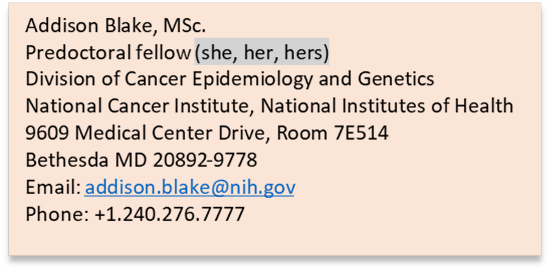Have you noticed folks specifying their pronouns?
The English language uses gender-specific third-person singular pronouns (he and she). For people whose sex assigned at birth does not align with their gender identity, being mis-gendered with the wrong pronouns can feel disrespectful and invalidating. People who are gender non-binary may use a gender-neutral pronoun such as the singular ‘they’.

People with diverse gender identities and gender expressions may add pronouns to their social media profile, email signature, or Zoom name to avoid being mis-gendered. Displaying pronouns more universally promotes inclusivity and normalizes the practice. Further, it can serve as a reminder that assumptions shouldn’t be made about gender identity and demonstrates one’s willingness to learn and use someone else’s pronouns.
To learn more:
- The Lesbian, Gay, Bisexual and Transgender Equity Center at the University of Maryland has a resource page on Good Practices related to names and pronouns
- There may be new pronouns you haven’t heard of! To read more, refer to this UC Davis resource on Pronouns